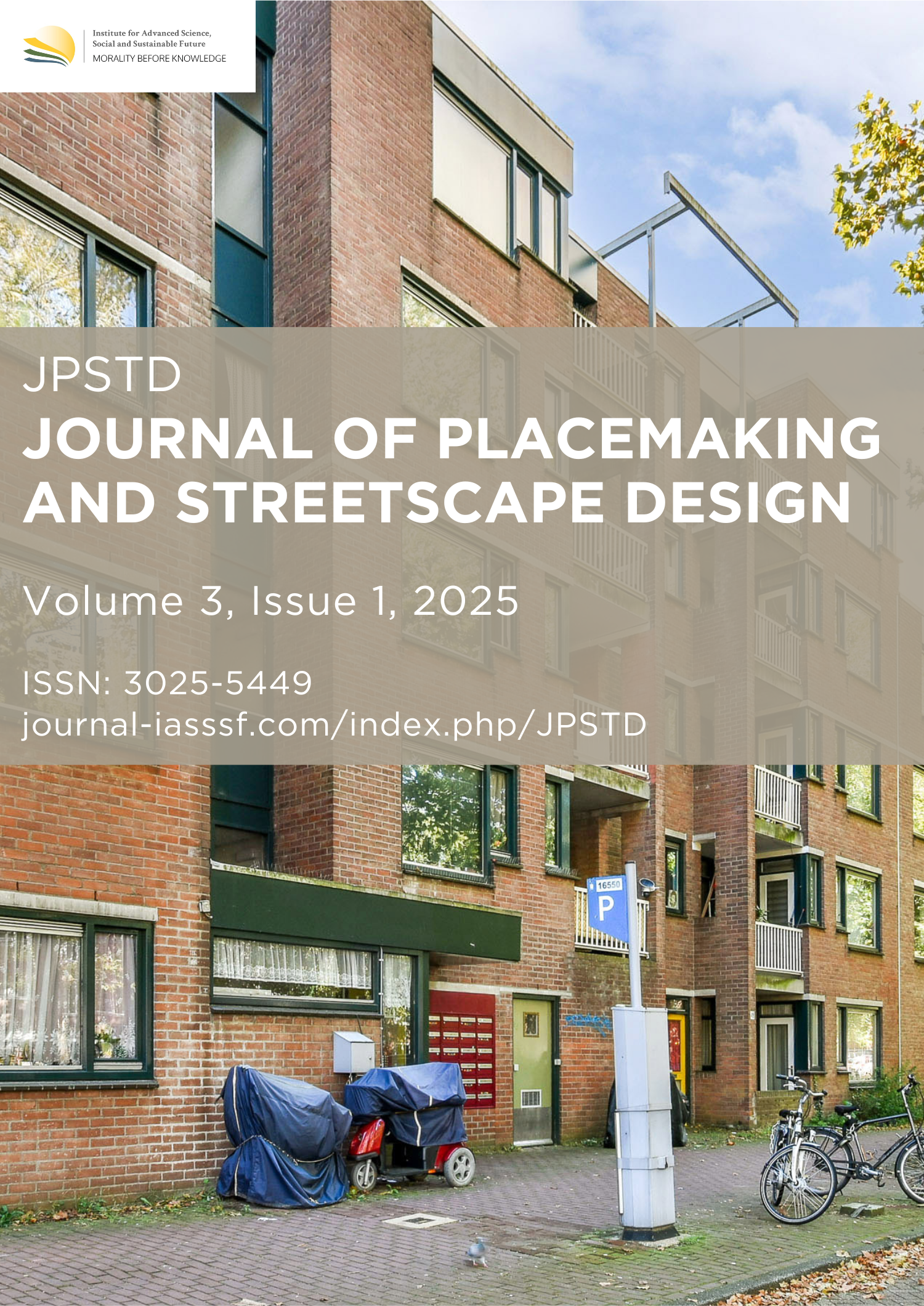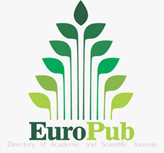Balancing urban growth and environmental sustainability through spatial planning: A Policy and land use analysis
DOI:
https://doi.org/10.61511/jpstd.v3i1.2025.2290Keywords:
land use change, spatial planning, sustainable spatial planning, urban developmentAbstract
Background: Spatial planning is an essential component of regional development, particularly in areas that serve as centers of governance and economic activity. Challenges in sustainable spatial management arise as population growth increases the demand for public facilities, housing, and green open spaces. This study analyzes spatial planning policies with a focus on land use, infrastructure, and environmental impacts. Using a participatory approach, it aims to identify problems and explore potential strategies for more effective spatial planning development. Methods: This study applies a comprehensive literature review method, with data sourced from previous studies and land use maps. The discussion is presented descriptively, referencing relevant scientific literature and reliable sources. Findings: The results are expected to provide recommendations for sustainability-oriented decision-making and contribute to improving the quality of life of urban communities. These efforts are essential to balance development with environmental conservation while also enhancing the attractiveness of urban areas for investment and tourism. Conclusion: Analysis shows that residential land experienced a substantial increase, from 171.44 hectares to 348.17 hectares, reflecting high demand for housing driven by population growth and infrastructure development. Conversely, dry land decreased drastically from 1,566.23 hectares to 305.41 hectares, indicating significant conversion of land for non-agricultural purposes. The reduction of green open land and dry land poses serious risks to food security and environmental quality. Novelty/Originality of this article: This study emphasizes the importance of implementing sustainable spatial planning policies that balance infrastructure and residential development with ecological preservation and agricultural sustainability. With appropriate strategies, land use can be directed to support sustainable and resilient urban growth.
References
Akhtar, N., Syakir Ishak, M. I., Bhawani, S. A., & Umar, K. (2021). Various natural and anthropogenic factors responsible for water quality degradation: A review. Water, 13(19), 2660. https://doi.org/10.3390/w13192660
Alifah, I., Fitriyani, N., Amburika, N., & Adi, N. P. (2024). Analisis Pengaruh Limbah Pabrik Tahu Terhadap Kualitas Air Sungai: Studi Kasus Dan Implikasi Terhadap Lingkungan. Lamda: Jurnal Ilmiah Pendidikan MIPA dan Aplikasinya, 4(3), 185-191. https://doi.org/10.58218/lambda.v4i3.974
Allan, A., Soltani, A., Abdi, M. H., & Zarei, M. (2022). Driving forces behind land use and land cover change: A systematic and bibliometric review. Land, 11(8), 1222. https://doi.org/10.3390/land11081222
Angghita, L. J., Santosa, B., & Wasunimpuna, B. Y. A. (2024). Efektifitas Kinerja Cekdam dalam Upaya Pengendalian Sedimentasi Danau Rawa Pening. Praxis: Jurnal Sains, Teknologi, Masyarakat dan Jejaring, 6(2), 131-142. https://doi.org/10.24167/praxis.v6i2.11550
Anthony Jr, B. (2024). The role of community engagement in urban innovation towards the co-creation of smart sustainable cities. Journal of the Knowledge Economy, 15(1), 1592-1624. https://doi.org/10.1007/s13132-023-01176-1
Bappeda Bogor Regency. (2020). Rencana Tata Ruang Wilayah Kabupaten Bogor 2020-2040. Badan Perencanaan Pembangunan Daerah. https://bappedalitbang.bogorkab.go.id/regulasi/77/Perda-No.-1-Tahun-2024-tentang-RTRW-tahun-2024-2044.pdf
Bappenas. (2020). Pedoman Penyusunan Rencana Tata Ruang Wilayah. Kementerian Perencanaan Pembangunan Nasional. https://peraturan.bpk.go.id/Details/219487/permen-ppnkepala-bappenas-no-6-tahun-2020
Belay, H., Melesse, A. M., & Tegegne, G. (2024). Scenario-based land use and land cover change detection and prediction using the cellular automata–Markov model in the Gumara Watershed, Upper Blue Nile Basin, Ethiopia. Land, 13(3), 396. https://doi.org/10.3390/land13030396
BPS. (2020). Statistik Kabupaten Bogor 2020. BPS Kabupaten Bogor. https://bogorkab.bps.go.id/id/publication/2020/04/27/801a42dcb801f39f4e20910d/kabupaten-bogor-dalam-angka-2020.html
Connolly, C., Keil, R., & Ali, S. H. (2021). Extended urbanisation and the spatialities of infectious disease: Demographic change, infrastructure and governance. Urban studies, 58(2), 245-263. https://doi.org/10.1177/0042098020910873
Der Sarkissian, R., Al Sayah, M. J., Abdallah, C., Zaninetti, J. M., & Nedjai, R. (2022). Land use planning to reduce flood risk: opportunities, challenges and uncertainties in developing countries. Sensors, 22(18), 6957. https://doi.org/10.3390/s22186957
Dinas Pekerjaan Umum dan Penataan Ruang Kabupaten Bogor. (2019). Laporan Pengelolaan Sumber Daya Air Kabupaten Bogor 2019. Dinas PUPR. https://pupr.bogorkab.go.id/uploads/publikasi/laporan-kinerja-desember-dinas-pupr-tahun-2019.pdf
Dong, J., Jiang, H., Gu, T., Liu, Y., & Peng, J. (2022). Sustainable landscape pattern: a landscape approach to serving spatial planning. Landscape Ecology, 37(1), 31-42. https://doi.org/10.1007/s10980-021-01329-0
Erasu Tufa, D., & Lika Megento, T. (2022). Conversion of farmland to non-agricultural land uses in peri-urban areas of Addis Ababa Metropolitan city, Central Ethiopia. GeoJournal, 87(6), 5101-5115. https://doi.org/10.1007/s10708-021-10553-9
Fu, H., Liu, J., Dong, X., Chen, Z., & He, M. (2024). Evaluating the sustainable development goals within spatial planning for decision-making: A major function-oriented zone planning strategy in China. Land, 13(3), 390. https://doi.org/10.3390/land13030390
Ghalehteimouri, K. J., Shamsoddini, A., Mousavi, M. N., Ros, F. B. C., & Khedmatzadeh, A. (2022). Predicting spatial and decadal of land use and land cover change using integrated cellular automata Markov chain model based scenarios (2019–2049) Zarriné-Rūd River Basin in Iran. Environmental Challenges, 6, 100399. https://doi.org/10.1016/j.envc.2021.100399
Gonzalez Rodriguez, L., McCallum, A., Kent, D., Rathnayaka, C., & Fairweather, H. (2023). A review of sedimentation rates in freshwater reservoirs: recent changes and causative factors. Aquatic Sciences, 85(2), 60. https://doi.org/10.1007/s00027-023-00960-0
Guan, D., Li, H., Inohae, T., Su, W., Nagaie, T., & Hokao, K. (2011). Modeling urban land use change by the integration of cellular automaton and Markov model. Ecological modelling, 222(20-22), 3761-3772. https://doi.org/10.1016/j.ecolmodel.2011.09.009
Halder, B., Bandyopadhyay, J., & Banik, P. (2021). Monitoring the effect of urban development on urban heat island based on remote sensing and geo-spatial approach in Kolkata and adjacent areas, India. Sustainable Cities and Society, 74, 103186. https://doi.org/10.1016/j.scs.2021.103186
Humbal, A., Chaudhary, N., & Pathak, B. (2023). Urbanization trends, climate change, and environmental sustainability. In Climate change and urban environment sustainability (pp. 151-166). Singapore: Springer Nature Singapore. https://doi.org/10.1007/978-981-19-7618-6_9
KLHK. (2021). Laporan Lingkungan Hidup 2021. Kementerian Lingkungan Hidup dan Kehutanan. https://www.menlhk.go.id/work-plan/laporan-kinerja-kementerian-lingkungan-hidup-dan-kehutanan-tahun-2021/
Magsi, H., Sabir, M., Torre, A., & Chandio, A. A. (2022). Management practices to minimize land use conflicts on large infrastructure projects: examples of dams construction in Pakistan. GeoJournal, 87(6), 4851-4861. https://doi.org/10.1007/s10708-021-10532-0
Peta Tematik Indo. (2013). Administrasi Kabupaten Bogor. https://petatematikindo.wordpress.com/tag/kab-bogor/
Qu, Y., Zhan, L., Jiang, G., Ma, W., & Dong, X. (2021). How to Address “Population Decline and Land Expansion (PDLE)" of rural residential areas in the process of Urbanization: A comparative regional analysis of human-land interaction in Shandong Province. Habitat International, 117, 102441. https://doi.org/10.1016/j.habitatint.2021.102441
Quirinno, R. S., Murtiana, S., & Asmoro, N. (2024). Peran sektor pertanian dalam meningkatkan ketahanan pangan dan ekonomi nasional. NUSANTARA: Jurnal Ilmu Pengetahuan Sosial, 11(7), 2811-2822. https://doi.org/10.31604/jips.v11i7.2024.2811-2822
Raihan, A., & Tuspekova, A. (2022). Dynamic impacts of economic growth, energy use, urbanization, tourism, agricultural value-added, and forested area on carbon dioxide emissions in Brazil. Journal of Environmental Studies and Sciences, 12(4), 794-814. https://doi.org/10.1007/s13412-022-00782-w
Rencana Tata Ruang Wilayah Kabupaten Bogor. (2009). Dokumen RTRW Kabupaten Bogor 2009-2019. Bappeda Kabupaten Bogor. https://bappedalitbang.bogorkab.go.id/regulasi/77/Perda-No.-1-Tahun-2024-tentang-RTRW-tahun-2024-2044.pdf
Rijal, S. (2023). The importance of community involvement in public management planning and decision-making processes. Journal of Contemporary Administration and Management (ADMAN), 1(2), 84-92. https://doi.org/10.61100/adman.v1i2.27
Saleh, A., Mujahiddin, M., & Gunawan, M. D. (2022). Optimizing Corporate Social Responsibility Funds for Community Empowerment and Regional Planning in Urban Slums. International Journal Reglement & Society (IJRS), 3(3), 203-209. https://doi.org/10.55357/ijrs.v3i3.272
Soemarno, A. (2018). Kebijakan Penataan Ruang di Indonesia: Teori dan Praktek. Raja Grafindo Persada.
Stavi, I., Roque de Pinho, J., Paschalidou, A. K., Adamo, S. B., Galvin, K., de Sherbinin, A., ... & van der Geest, K. (2022). Food security among dryland pastoralists and agropastoralists: The climate, land-use change, and population dynamics nexus. The Anthropocene Review, 9(3), 299-323. https://doi.org/10.1177/20530196211007512
Tjokrowinoto, S. (2017). Perencanaan Tata Ruang: Konsep dan Aplikasi. Salemba Empat.
Ugwu, C. O., Ozor, P. A., & Mbohwa, C. (2022). Small hydropower as a source of clean and local energy in Nigeria: Prospects and challenges. Fuel communications, 10, 100046. https://doi.org/10.1016/j.jfueco.2021.100046
Zahoor, I., & Mushtaq, A. (2023). Water pollution from agricultural activities: A critical global review. International Journal of Chemical and Biochemical Sciences, 23(1), 164-176. https://iscientific.org/wp-content/uploads/2023/05/19-IJCBS-23-23-24.pdf
Downloads
Published
How to Cite
Issue
Section
Citation Check
License
Copyright (c) 2025 Tri Riska Putri

This work is licensed under a Creative Commons Attribution 4.0 International License.
















